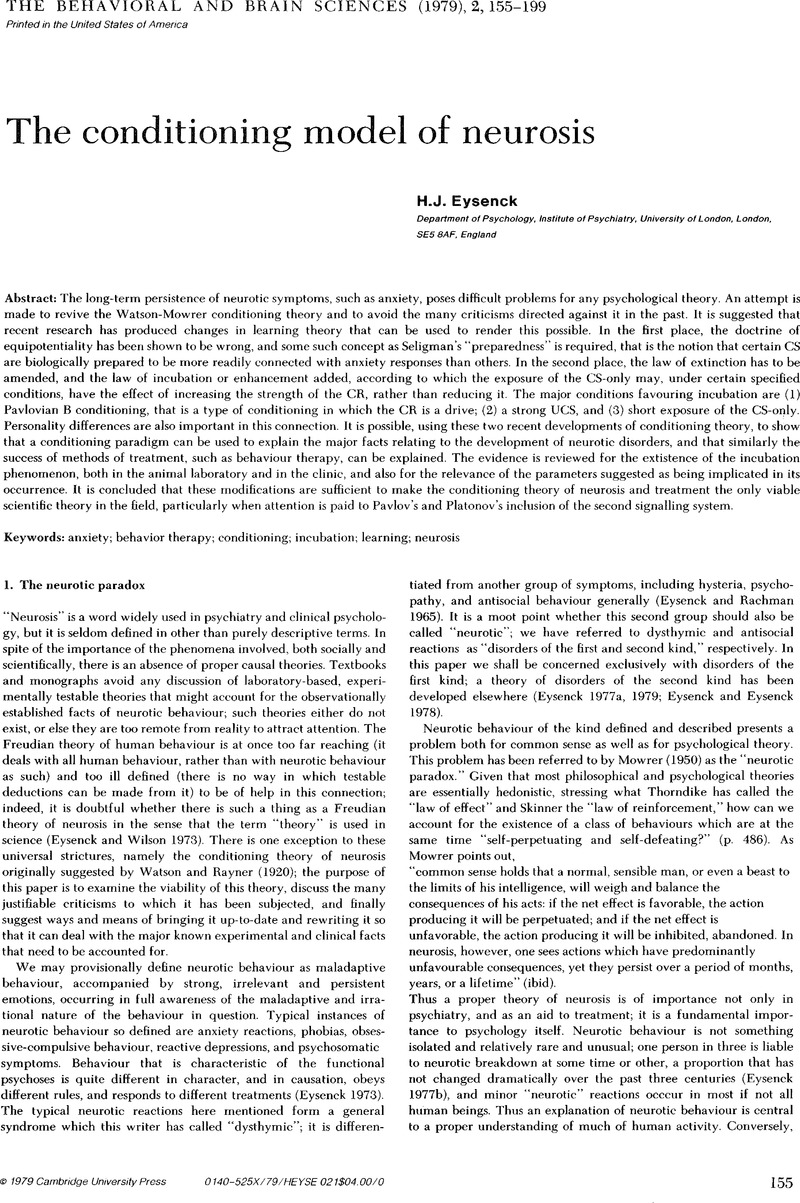Crossref Citations
This article has been cited by the following publications. This list is generated based on data provided by Crossref.
Hugdahl, Kenneth
1981.
The three-systems-model of fear and emotion—A critical examination.
Behaviour Research and Therapy,
Vol. 19,
Issue. 1,
p.
75.
Fanselow, Michael S.
and
Bolles, Robert C.
1982.
Independence and competition in aversive motivation.
Behavioral and Brain Sciences,
Vol. 5,
Issue. 2,
p.
320.
Ursin, Holger
1982.
Pain is pain and fear is fear.
Behavioral and Brain Sciences,
Vol. 5,
Issue. 2,
p.
318.
Mackintosh, N. J.
1982.
Conditioning as compensation?.
Behavioral and Brain Sciences,
Vol. 5,
Issue. 2,
p.
318.
Holden, Arthur E.
and
Barlow, David H.
1986.
Heart rate and heart rate variability recorded in vivo in agoraphobics and nonphobics.
Behavior Therapy,
Vol. 17,
Issue. 1,
p.
26.
Koksal, Falih
and
Power, Kevin
1990.
Four Systems Anxiety Questionnaire (FSAQ): A Self-Report Measure of Somatic, Cognitive, Behavioral, and Feeling Components.
Journal of Personality Assessment,
Vol. 54,
Issue. 3,
p.
534.
Koksal, Falih
Power, Kevin G.
and
Sharp, Donald M.
1991.
Profiles of DSM III anxiety disorders on the somatic, cognitive, behavioural and feeling components of the four systems anxiety questionnaire.
Personality and Individual Differences,
Vol. 12,
Issue. 6,
p.
643.
Levenson, Robert W.
2003.
For distinguished contributions to psychophysiology: Arne Öhman.
Psychophysiology,
Vol. 40,
Issue. 3,
p.
317.



